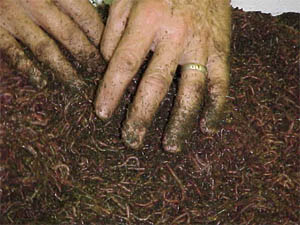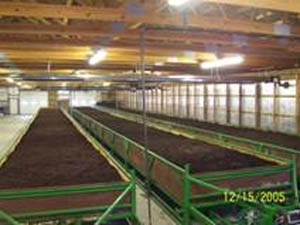Worm Composting
Vermicomposting is a process that relies on earthworms and microorganisms to help stabilize active organic materials and convert them to a valuable soil amendment and source of plant nutrients. Earthworms will consume most organic materials, including animal manure, agricultural crop residues, organic byproducts from industries, yard trimmings, food preparation scraps and leftovers, scrap paper, and sewage sludge.
Of the more than 4,000 species of earthworms, only half a dozen are used for vermicomposting worldwide. The earthworm species most frequently used for vermicomposting is Eisenia fetida, which is commonly called Red Wiggler.
How To Choose A Vermicomposting System
A variety of methods may be used to process large volumes of organic residuals with earthworms, ranging from land and labor-intensive techniques to fully automated high-tech systems. Types of systems include windrows, beds, bins, and automated raised bioreactors. Choosing which vermicomposting system to use will depend upon:
- Amount of feedstock to be processed
- Funding available
- Site and space restrictions
- Climate and weather
- State and local regulatory restrictions
- Facilities and equipment on hand
- Availability of low-cost labor
What Are the Advantages In Using Vermicompost?
Earthworm casts are covered with mucus from their intestinal tract; this layer provides a readily available carbon source for soil microbes and leads to a flush of microbial activity in fresh casts. Vermicompost improves soil structure, reduces erosion, and improves and stabilizes soil pH. In addition, vermicompost increases moisture infiltration in soils and improves its moisture holding capacity.
Plant growth is significantly increased by vermicompost, whether it is used as a soil additive, a vermicompost tea, or as a component of horticultural soilless container media. Vermicompost causes seeds to germinate more quickly, seedlings to grow faster, leaves grow bigger, and more flowers, fruits or vegetables are produced. These effects are greatest when a smaller amount of vermicompost is used—just 10-40 percent of the total volume of the plant growth medium in which it is incorporated. Vermicompost also decreases attacks by plant pathogens, parasitic nematodes and arthropod pests.
Recommended Reading About Vermicomposting
- Raising Earthworms Successfully
- Manual of On-Farm Vermicomposting and Vermiculture
- Worms Can Recycle Your Garbage
- NC State University Extension Solid Waste Management
Author: Rhonda Sherman, North Carolina State University





